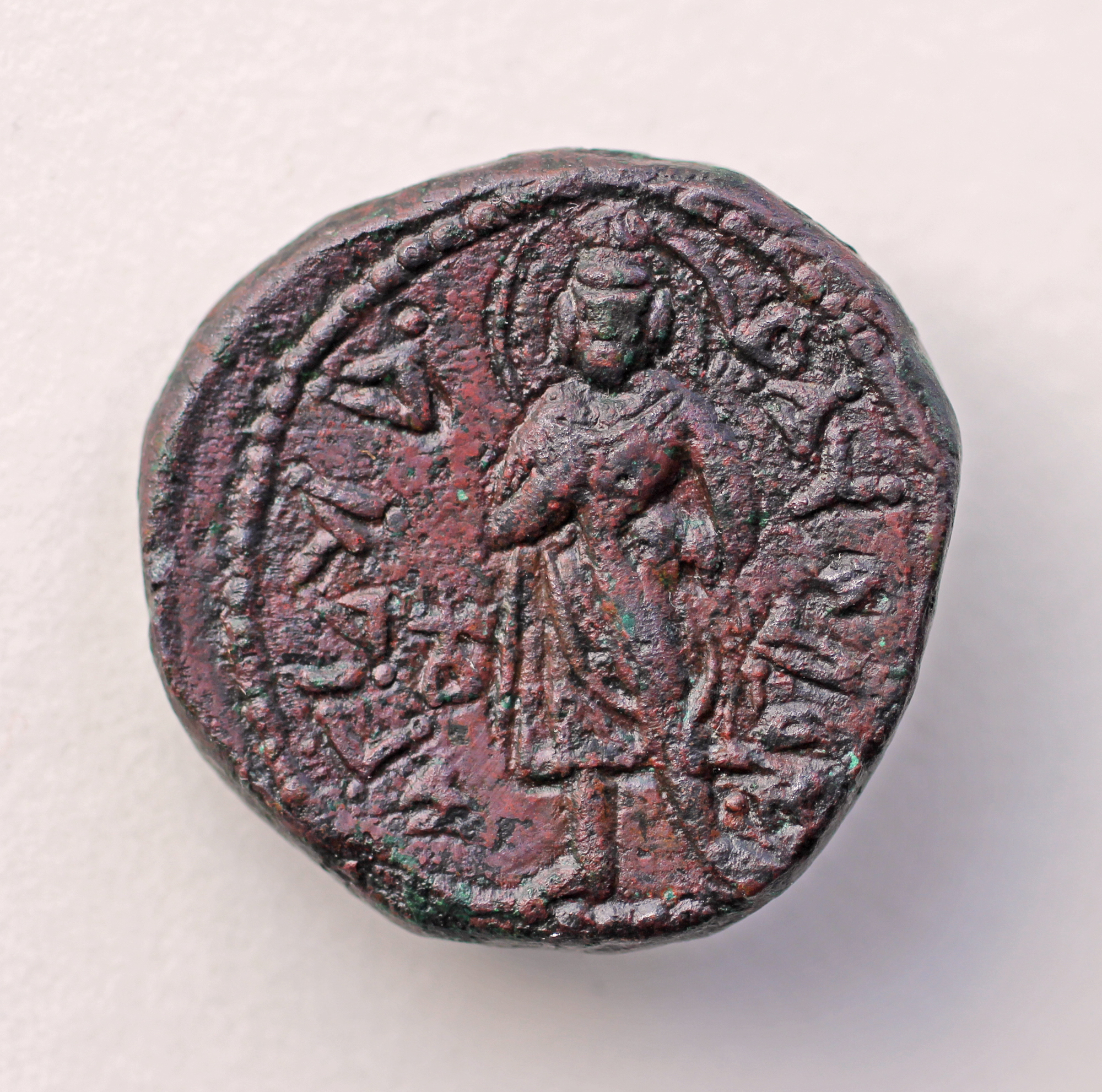I collect ancient coins. Years ago, at a currency show, I saw a coin showing a man with a full beard wearing bulky boots, a peaked cap, and a long cape over a triangular caftan. On the reverse, a four-armed figure stood next to a four-branched candlestick. Inscriptions in an exotic script circled both figures. I’d never seen a coin like it.
I learned that it was a coin of the Kushan Empire, one of the four great powers of its day (along with Rome, Parthia, and China’s Han Dynasty) that ruled much of Central Asia in the 2nd and 3rd centuries CE. The few ancient references to the Kushans are so obscure that the empire was lost to Western historians for more than a thousand years, its importance only rediscovered in the early 19th century through the study of its coins.
We have never heard of the Kushans because Western education is so often focused on European history. But the Kushans were integral to the shaping and spreading of early Mahayana Buddhism. They were the first culture to depict the Buddha in human form, and these images have become the iconic representations that we see today. When I added a Kushan coin showing the Buddha to my collection, I felt like I owned a piece of world-changing history.
The Kushan Empire started on the eastern Mongolian steppes north of China during the 2nd century BCE, where warring nomadic tribes drove one tribal confederation called the Yuezhi far west into present-day northern Afghanistan. There they encountered Hellenistic culture brought by Alexander the Great some 200 years earlier. The Yuezhi abandoned their nomadic way of life to become the Kushans—Guishang being a Chinese word for one of the Yuezhi tribes—and began to profit from increasing trade between the Roman Empire and Han China during the 1st century CE. The Kushan Empire grew to include present-day Afghanistan, Pakistan, Uzbekistan, and northwest India, and brought hundreds of years of relative stability, an era known as the Pax Kushana.
The cloaked figure I saw on the Kushan coin was King Kanishka, perhaps the most important Kushan ruler, who reigned from 127 to 151 CE. The candlestick was his tamgha, a personal symbol recalling his nomadic ancestors that appeared on all his coins. The four-armed figure was the Indian god Shiva. The Kushans are known for their multiculturalism and religious tolerance, and their coins depict more than 30 deities from Greco-Roman, Iranian, and Indian traditions. But it appears that King Kanishka may have been most generous in his patronage of Buddhism during the development of Mahayana Buddhism. He is credited with calling the Fourth Buddhist Council in Kashmir, where 500 monks gathered to compile the canon of the Sarvastivada sect, solidifying its Abhidharma teachings. At about this time Nagarjuna wrote his famous Treatise on the Middle Way. We also find the first evidence of Prajnaparamita and the Perfection of Wisdom sutras along with other foundational sutras that would eventually shape Buddhism in China.
From the earliest days of Buddhism until the Kushans, the Buddha had been shown symbolically—as the Bodhi tree, a stupa, an empty throne, a wheel, a riderless horse, or a footprint. The Kushans absorbed the Hellenistic tradition of representing deities as human beings. Kushan art—called Gandharan—blended Indian and Greek styles to create some of the earliest depictions of the historical Buddha, the future Buddha (Maitreya), and bodhisattvas, whose likenesses survive to this day. (A different style of Buddha image appeared at Mathura in India around the same time.) Some of the first Gandharan Buddha images appeared on King Kanishka’s coins, which may have been minted to commemorate the building of a towering 700-foot stupa holding relics of the Buddha, a wonder of its day that stood for centuries on the outskirts of present-day Peshawar in Pakistan.
The famous Chinese pilgrim and translator Xuanxang traveled through Central Asia on his way to India in the 7th century. By then the Kushans were long gone, but evidence of their presence remained in a vast profusion of richly ornamented stupas, temples, and monasteries full of Buddhas and bodhisattvas carved in human form. Today, remains of this Buddhist past dot the landscape of Pakistan’s Swat Valley. While decades of war and the expense of archaeology have made the excavation of Kushan sites difficult or impossible, there have been important recent contributions to our understanding of the Kushans. The Rabatak Inscription, found in Afghanistan in 1993, clarified Kanishka’s geneology—a topic that was hotly debated for decades. In 1994 the British Museum acquired ancient Gandharan birch bark scrolls containing perhaps the oldest surviving Buddhist texts. At Mes Aynak near Kabul, a Buddhist city was discovered built on top of a huge copper deposit—the most important archaeological discovery in a generation according to writer and historian William Dalrymple. Sadly, a 30-year mining lease with China was signed in 2007 threatening to destroy it. An international team of archaeologists is trying to save what they can as negotiations to extend the excavation continue. The show Hidden Treasures from the National Museum, Kabul, brought Kushan-era pieces to museum audiences in the U.S., Canada, the U.K., and Germany in 2009. The American Numismatic Society published a catalog of their Kushan coin collection last year, and one on the British Museum’s comprehensive Kushan coin collection is coming soon, reminding me of my first encounter with King Kanishka. We won’t be wondering who the Kushans were much longer.
